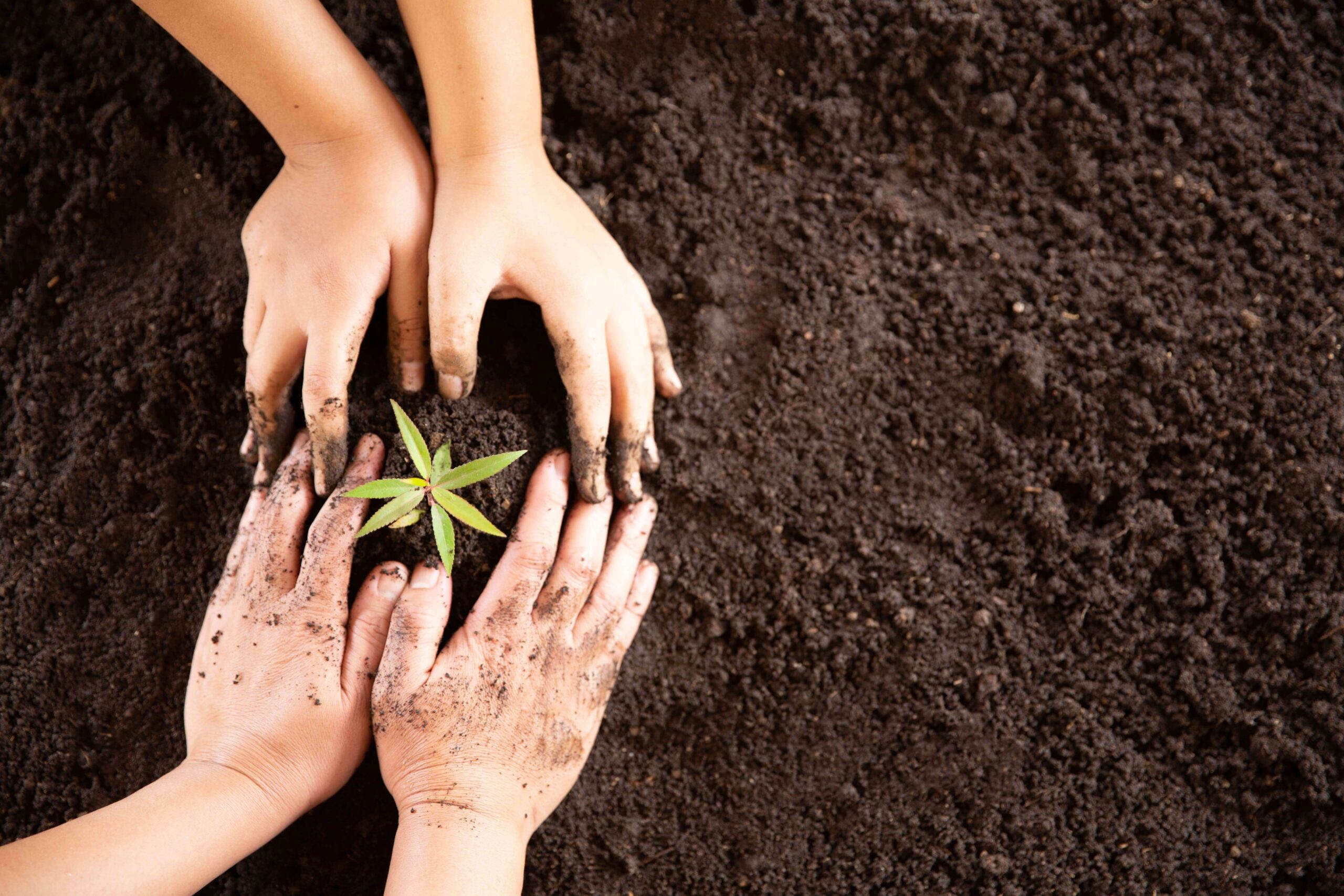
Are you someone who enjoys nurturing plants and seeing them thrive? Then you might have a green thumb! A gardener is someone who tends to plants, ensuring they grow healthy and beautiful. Having a green thumb means you have a natural talent for gardening and can make plants flourish under your care. Whether you’re planting flowers, herbs, or vegetables, being a gardener requires patience, knowledge, and a love for nature. So, how can you become a gardener? Let’s explore some steps to develop your green thumb and cultivate a vibrant garden.
Table of Contents
How to Become a Gardener
Becoming a gardener is an enriching journey, fostering a deep connection with nature and the joy of nurturing life. Whether you’re starting with a small balcony or a spacious backyard, cultivating your green thumb is a rewarding endeavour. Here’s a comprehensive guide to how to become a gardener:
Start Small
Begin your gardening journey by starting small with a few easy-to-care-for plants. Choose plants that thrive in your local climate and require minimal maintenance, such as succulents or herbs like basil and mint. Starting small allows you to gain confidence and experience before taking on more challenging plants.
Learn the Basics
Familiarise yourself with the basic principles of gardening, including soil preparation, watering, sunlight requirements, and proper plant care. Understanding these fundamentals lays a solid foundation for successful gardening. There are plenty of beginner-friendly resources available, such as gardening books, online tutorials, and community gardening classes.
Join Studyhub courses like – Gardening & Landscaping, Garden Design Certificate, Horticulture Diploma & Organic Gardening Certification Online and Urban Gardening and Sustainable Cities
Select the Right Plants
Choose plants that match your gardening skill level and the conditions of your space. Consider factors such as sunlight exposure, soil type, and available space when selecting plants for your garden. Opt for low-maintenance varieties that are resilient to common pests and diseases.
Prepare Your Soil
Good soil is essential for healthy plant growth. Test your soil to determine its pH level and nutrient content, and amend it as needed with organic matter such as compost or peat moss. Proper soil preparation provides plants with the essential nutrients they need to thrive. Understanding soil composition and its impact on plant growth is a fundamental aspect of learning how to become a gardener.
Provide Adequate Watering
Proper watering is crucial for the health of your plants. Learn the watering needs of each plant species in your garden and establish a regular watering schedule. Avoid overwatering, as it can lead to root rot, and ensure that plants receive sufficient moisture during hot and dry periods.
Maintain Regular Care
Regular maintenance is key to a thriving garden. Monitor your plants for signs of pests, diseases, or nutrient deficiencies, and take prompt action to address any issues. Developing a keen eye for pest identification and management is an important skill to cultivate when learning how to become a gardener. Deadhead flowers, prune overgrown branches, and remove weeds regularly to keep your garden tidy and healthy.
Learn from Experience
Gardening is a continuous learning process. Take note of what works well in your garden and what doesn’t, and use this knowledge to improve your gardening skills over time. Don’t be afraid to experiment with new plants and techniques, and embrace failures as valuable learning experiences. Acquiring practical knowledge through hands-on experience is crucial for anyone aspiring to learn how to become a gardener.
Connect with Other Gardeners
Joining a gardening club or online gardening community is a great way to connect with fellow enthusiasts, share tips and advice, and learn from experienced gardeners. Building a supportive network of like-minded individuals can inspire and motivate you on your gardening journey. Networking with experienced gardeners and seeking mentorship can greatly accelerate one’s path to mastering how to become a gardener. Join courses like – Kitchen Gardening Level 3 Diploma, Pest Control Techniques: Effective Solutions for Pest Management, Hydroponics Gardening Online Course, Level 2 Gardening Course, Horticulture and Plant Nutrition Training
In conclusion, becoming a gardener is a fulfilling endeavour that rewards patience, dedication, and a love for nature. By starting small, learning the basics, and maintaining regular care, you can cultivate your green thumb and enjoy the beauty and bounty of your own garden. Learning how to become a gardener involves mastering the art of nurturing plants and understanding their unique needs. So roll up your sleeves, dig in the dirt, and let your gardening journey begin!
What is the Process of Cultivating Green Thumb Plants?
If you’re keen on nurturing a lush garden, developing a green thumb is crucial. Cultivating plants with finesse involves more than just watering them. With the right approach, anyone can become a skilled gardener. Here’s a simple guide on how to foster a green thumb and maintain thriving plants.
Selecting the Right Plants
Choose plants that are suitable for your climate and the conditions of your garden. Consider factors like sunlight, soil type, and water requirements.
Preparing the Soil
Before planting, ensure that the soil is well-drained and rich in nutrients. You can improve soil quality by adding compost or organic matter.
Planting
Follow the instructions on the plant’s tag or seed packet for proper spacing and depth. Gently loosen the roots before placing them in the soil.
Watering
Water your plants regularly, but be careful not to overwater them. Monitor the moisture level of the soil and adjust your watering schedule accordingly.
Fertilising
Provide your plants with essential nutrients by fertilising them regularly. Choose a fertiliser that is appropriate for the type of plants you’re growing.
Pruning and Deadheading
Remove dead or dying leaves and flowers to encourage new growth. Pruning also helps maintain the shape and health of your plants.
Pest and Disease Control
Keep an eye out for pests and diseases that may affect your plants. Use natural remedies or chemical treatments as needed to protect them.
Mulching
Apply a layer of mulch around your plants to help retain moisture, suppress weeds, and regulate soil temperature.
Monitoring and Maintenance
Regularly inspect your plants for signs of stress, disease, or nutrient deficiencies. Address any issues promptly to keep your garden thriving.
Learning and Experimenting
Gardening is a continuous learning process. Take the time to research new techniques, try different plants, and learn from both successes and failures.
By following these simple steps, you can cultivate a green thumb and enjoy a flourishing garden. Remember that gardening is a learning process, so don’t be discouraged by setbacks. Cultivating patience and perseverance is essential on the journey of discovering how to become a successful gardener. With patience, dedication, and a little bit of trial and error, you’ll soon be reaping the rewards of your efforts.
5 Reasons Why Everyone Can Have A Green Thumb
Having a green thumb might seem like a talent reserved for the chosen few, but in reality, anyone can cultivate it with a bit of patience and know-how. Becoming a gardener isn’t just about possessing an innate ability; it’s about learning and practising the right techniques. Here are five reasons why everyone has the potential to develop a green thumb.
Start Small and Learn
You don’t need a vast garden or years of experience to begin your journey as a gardener. Start small with a few potted plants or a small patch of soil in your backyard. Begin by growing easy-to-care-for plants like herbs or succulents. These plants are forgiving of mistakes and provide a great learning opportunity for beginners.
Understand Your Plants’ Needs
Just like people, plants have specific needs to thrive. Learning about your plants’ requirements for sunlight, water, and soil will set you up for success. Take the time to research each plant you own or plan to grow. Understanding their needs will help you provide the right care and ensure they flourish.
Embrace Trial and Error
Gardening is as much about experimentation as it is about following rules. Don’t be afraid to make mistakes; they’re a natural part of the learning process. If a plant doesn’t survive, take it as a lesson rather than a failure. Adjust your approach and try again, armed with new knowledge and experience.
Stay Consistent with Care
Consistency is key to nurturing healthy plants. Make a habit of checking on your garden regularly, watering when needed, and removing any weeds or pests. Set up a schedule that works for you, whether it’s daily, weekly, or bi-weekly. Consistent care will help your plants thrive and prevent problems before they arise.
Celebrate Progress and Patience
Gardening is a journey, not a race. Celebrate the small victories along the way, whether it’s seeing a seed sprout or harvesting your first crop. Remember that plants grow at their own pace, and it takes time to see results. Practice patience and enjoy the process of watching your garden flourish over time.
In conclusion, developing a green thumb is within reach for everyone. By starting small, understanding your plants’ needs, embracing trial and error, staying consistent with care, and celebrating progress, you can become a successful gardener. Remember, it’s not about being born with a green thumb but about cultivating it through knowledge, practice, and a love for growing things.
FAQs
To be a gardener, you need patience, knowledge of plants, creativity, physical stamina, and attention to detail.
Essential tools and equipment for cultivating include:
Garden hoe
Hand cultivator
Garden fork
Tiller or rototiller
Spade or shovel
Rake
Cultivator tractor for larger areas
Power tiller for heavy-duty cultivation
The most famous gardener is likely Gertrude Jekyll, renowned for her influential work in garden design during the late 19th and early 20th centuries.
- All Courses
- IT & Software317
- Management263
- Teaching and Education229
- Business219
- Health and Fitness216
- Health & Safety155
- Engineering & Technology141
- Quality Licence Scheme136
- Health and Social Care128
- Healthcare123
- Accounting & Finance111
- Psychology96
- Lifestyle94
- Employability91
- Marketing75
- Office Productivity59
- Animal Care55
- Design and Photography48
- Beauty & Makeup43
- Design39
- Accounting & Bookkeeping32
- Web Development11
- Child Care8
- Construction7
- Agriculture5
- Environment1
Awarded By





0 responses on "How to Become a Gardener: Cultivating Your Green Thumb"